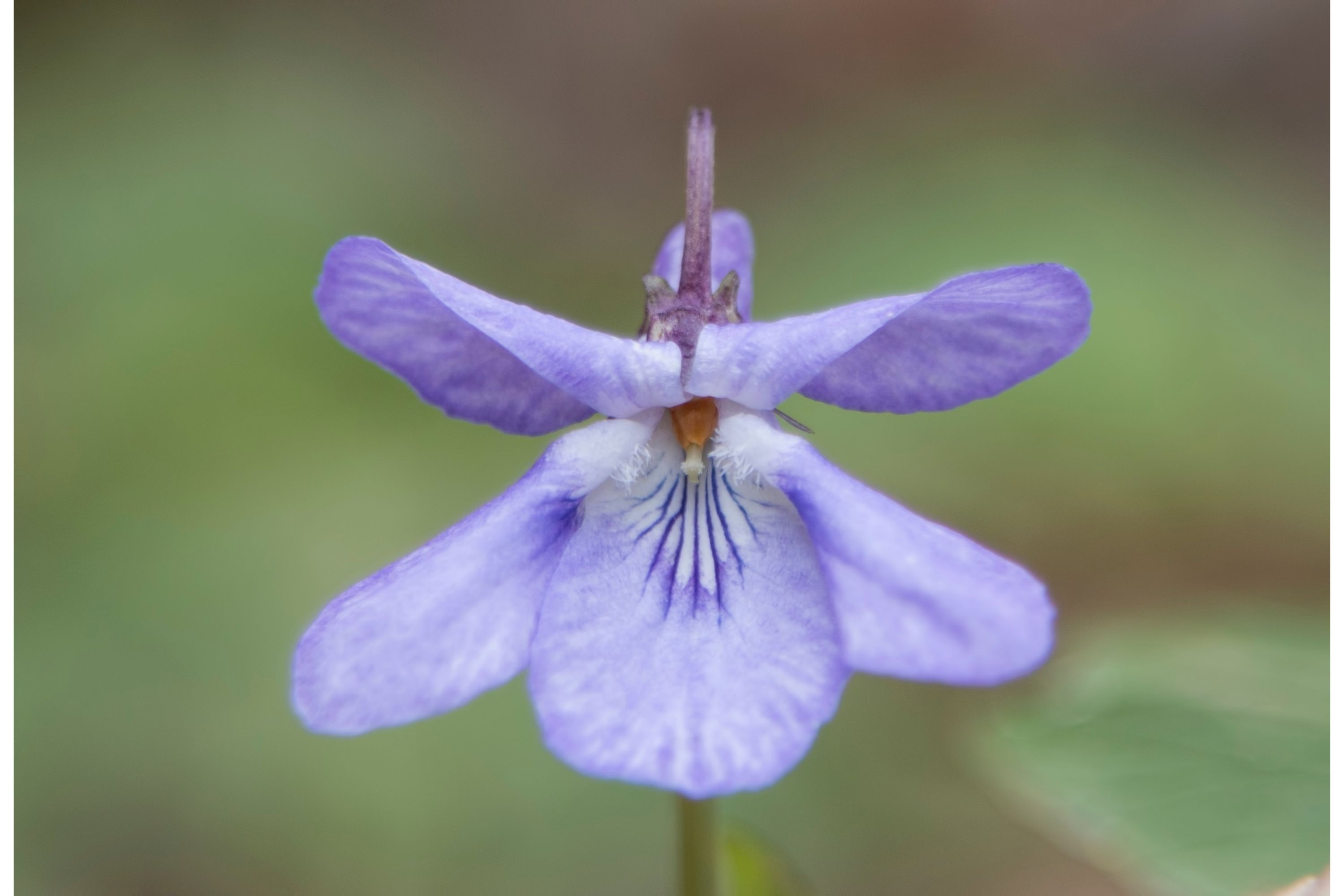Common blue violet
(Viola sororia)

Description
Viola sororia, also known as the common blue violet or woolly blue violet, is a perennial plant species native to eastern North America. It belongs to the Violaceae family, which includes around 600 species worldwide. This article will provide a comprehensive overview of the Viola sororia plant, including its physical characteristics, habitat and distribution, cultivation, and uses. Physical Characteristics The Viola sororia plant is a small herbaceous perennial that typically grows to a height of 6-8 inches (15-20 cm) and spreads up to 12 inches (30 cm) wide. Its leaves are heart-shaped, deeply veined, and often have a slightly toothed margin. They grow to a length of 2-4 inches (5-10 cm) and are arranged in a basal rosette. The leaves and stems of the plant are typically hairy, giving the plant a woolly appearance. The flowers of the Viola sororia plant are the most distinctive feature, and they bloom in early spring. The flowers are typically blue-violet in color, although they can also be white, pink, or pale purple. They have five petals that are oval in shape and are arranged asymmetrically, with two upper petals and three lower ones. The flowers also have a spur at the base, which contains nectar that attracts pollinators such as bees and butterflies. Habitat and Distribution Viola sororia is native to eastern North America, where it is found from Manitoba and Quebec southward to Florida and Texas. It is a common plant that grows in a variety of habitats, including woodlands, meadows, and along roadsides. The plant prefers moist, well-drained soil and partial shade, although it can tolerate full sun in cooler climates. Cultivation Viola sororia is an easy-to-grow plant that is well-suited to gardens and landscaping. It can be propagated from seed or by division, and it is also available as a potted plant at nurseries and garden centers. The plant prefers moist, well-drained soil with a pH between 6.0 and 7.5. When planting Viola sororia, it is best to choose a location with partial shade, although it can tolerate full sun in cooler climates. The plant should be watered regularly, especially during dry spells, to keep the soil moist. It is also important to provide the plant with adequate drainage, as it can be prone to root rot in poorly drained soil. Uses Viola sororia has a number of uses, both medicinal and culinary. The plant has been used in traditional medicine for centuries to treat a variety of ailments, including respiratory infections, digestive disorders, and skin conditions. The leaves and flowers of the plant are rich in antioxidants and anti-inflammatory compounds, which may account for its medicinal properties. In addition to its medicinal uses, Viola sororia is also used in cooking. The leaves and flowers of the plant are edible and have a slightly sweet flavor. They can be used as a garnish for salads or added to soups and stews for flavor and nutrition. The plant is also used to make violet syrup and violet jelly, which are popular in many parts of the world. Conclusion Viola sororia is a small, but hardy perennial plant that is well-suited to gardens and landscaping. It is easy to grow and has a number of uses, both medicinal and culinary. With its distinctive blue-violet flowers and heart-shaped leaves, it is a charming addition to any garden or landscape. Whether you are looking to add a splash of color to your yard or seeking natural remedies for common ailments, Viola sororia is an excellent choice.
Taxonomic tree:







